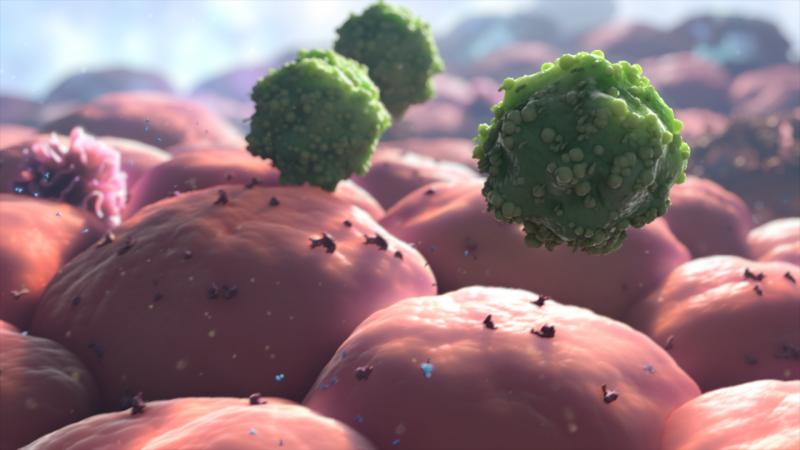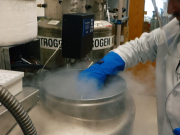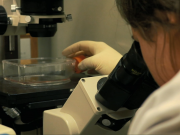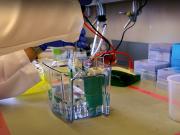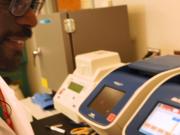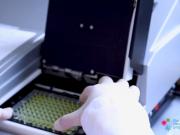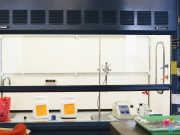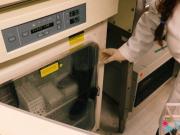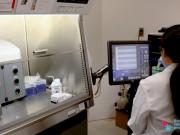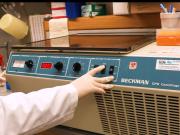A Look inside the Lab
The Next Step Science “A Look inside the Lab” series is comprised of short videos and novel reading passages designed to introduce students to commonly used laboratory equipment and the scientists who use it. The series can be used to enhance an existing lesson or as a starting point for introducing a concept. The videos can also be accessed together in a YouTube playlist on the Vaccine Makers Project YouTube channel.
We would like to thank our colleagues at the Children's Hospital of Philadelphia Research Institute, who allowed us to join them in their labs to film the video series. We also thank the individual scientists who generously shared their time and expertise in the interviews.
Liquid Nitrogen Freezer
The liquid nitrogen freezer stores items at -210 degrees Celsius. This type of freezer is used for cryopreservation of cells and tissue. It is also used for certain vaccines that require low-temperature storage for product stability.
Microscopes
Scientists use different types of microscopes in the laboratory. Different features and magnification capabilities enable scientists to choose the best option for the experiments that they are doing. Microscopes have been instrumental for studying and learning about cells, pathogens and other items too small to be seen with the naked eye.
Gel Electrophoresis
Gel electrophoresis is a process used to separate biological molecules, like DNA or proteins, based on molecular size and electric charge. The process of gel electrophoresis has many applications in the laboratory. For example, it can be used to detect pathogens, diagnose genetic disorders, or aid with DNA fingerprinting.
PCR
Polymerase chain reaction, also known as PCR, is a laboratory technique that models DNA replication, allowing scientists to synthesize DNA. PCR can rapidly generate millions of copies of a specific DNA sample, so small samples of DNA can be used for analysis or experimentation. PCR has many applications, including molecular biology research, forensic identification, and medical testing.
ELISA Plate Reader
An ELISA is a lab technique that can detect and measure a protein of interest in biological samples. The protein of interest can be part of a pathogen, like a virus, or part of an immune response, like an antibody.
Safety Hoods
Different types of safety hoods are used in the lab to provide protection to the scientists, the people around them, and, as applicable, the samples the scientists are working with.
Incubators
Different organisms need specific conditions in order to thrive/survive. Incubators are an important tool scientists use in the lab to regulate the temperature levels when they are working with cell lines or bacteria strains.
Flow Cytometer
Flow cytometers allow researchers to separate and collect subsets of cells from a sample in order to analyze them. Some uses for flow cytometry include identification of cells related to infections or other diseases and for genetic research.
Centrifuges
Centrifuges are used to separate substances into components by spinning samples at high speed. They are used in scientific and medical labs where they are employed in a variety of ways, such as for blood tests or purifying chemicals.

